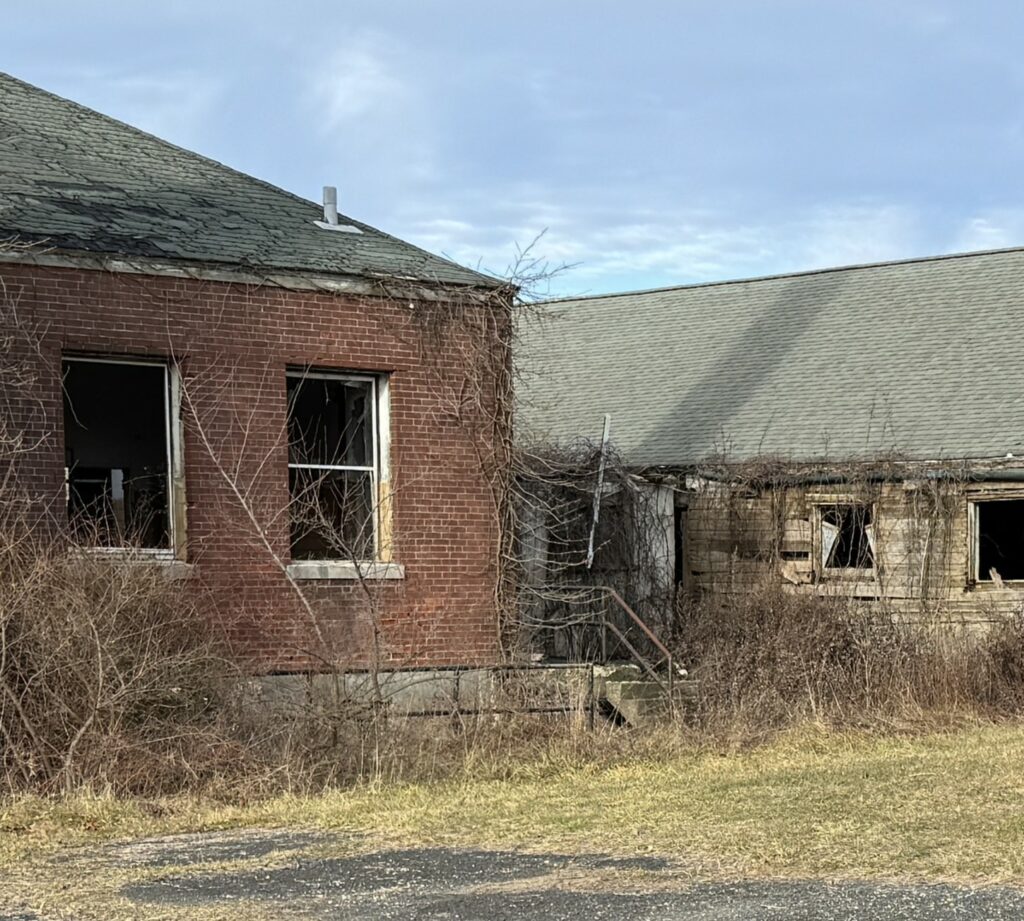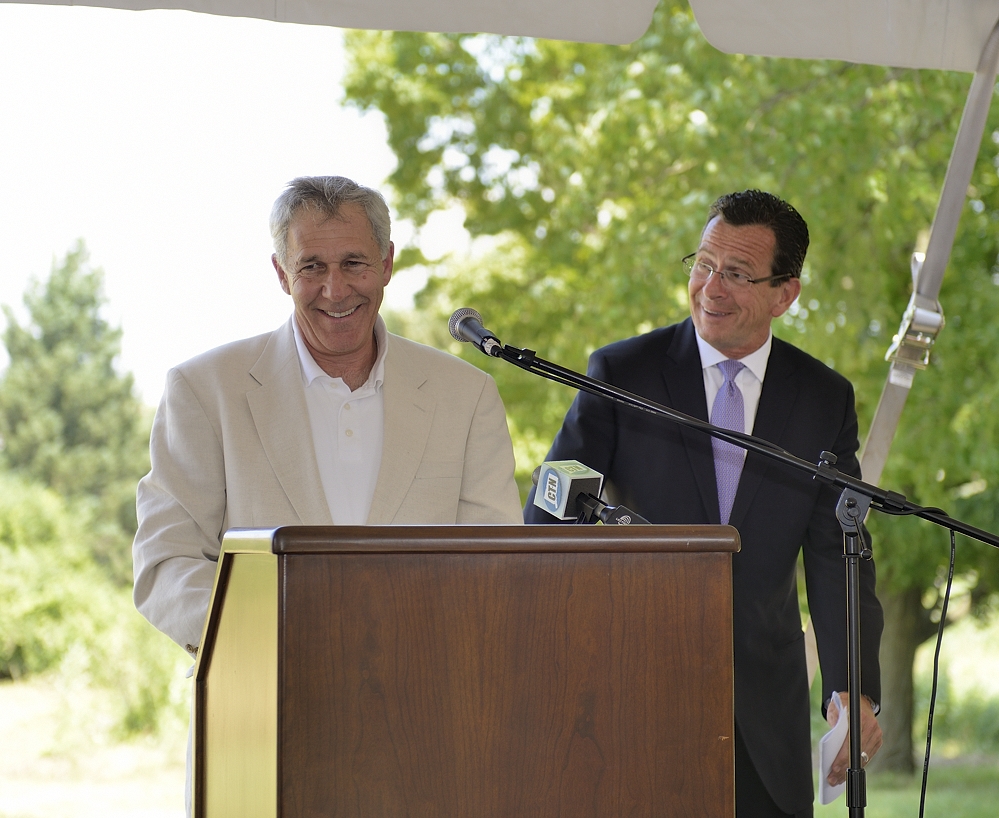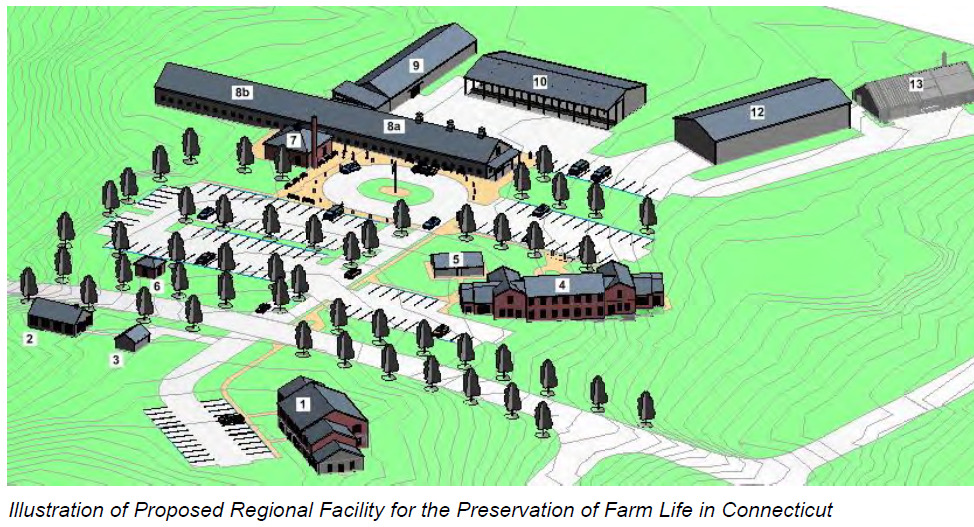
(This is one of three blogs on the Southbury Training School. This one covers the Southbury Farmlands. The others cover the Southbury Training School Campus and the Personnel Village.)
Introduction
The Southbury Training School (STS) is the largest area in the 69th House District with an uncertain future. Due to a court decree, the school is set to close when the last current resident leaves or dies. My prior efforts (2011 – 2015) to forge a future for STS were successful. However more must be done. In this blog, I provide a brief background review of STS, a summary of my past efforts as First Selectman regarding the Southbury Farmlands and my plans for what I will do if elected.
Background
Groundbreaking for the Southbury Training School (STS) was in 1937 after the state bought several adjacent farms totaling 1,700 acres. It was sized to accommodate about 1,200 residents and employed over 2,000 people.
The institution was based on progressive ideas at that time regarding people with developmental disabilities. Instead of an institutional setting with large wards and “warehousing”, residents lived in cottages in groups of about 30 people and were given training to enable them to be employed outside of STS. About 1,000 acres were kept as active agriculture for training farmhands. This included orchards, hay fields, chicken house, dairy herd and more.

In 1986, after a series of court cases and legislation, the decision was made to not allow any new residents to be admitted. STS would close by attrition as residents died or moved to other facilities like Group Homes. The need for training was diminished and the farmlands were basically abandoned.
The conventional wisdom before and after I was First Selectman was that: a) it is up to the State to chart the future and b) until they chart that future, there is no role for the Town of Southbury.
However, I and some others saw it differently. We believed that we should not wait until the last person left to begin planning the future of STS and that Southbury should be seen as a stakeholder in planning that future.
My Accomplishments
Within a month of my election in 2011, there was a meeting at STS with representatives of the Governor’s office, the Director of the Department of Development Services (DDS), the Department of Agriculture (DoAg) and the Director of STS. It was agreed that the State should identify the exact boundaries of the farmlands and move that property to the jurisdiction of DoAg. Prior conversations had already called for the farmlands to have an Agricultural Easement owned by the Southbury Land Trust. However, this was the first time we had commitment from the Governor to make the transfer to DoAg of the farm land and to include the agricultural easement.

This required substantial work at various levels including protracted negotiations between DDS and DoAg about the exact boundaries. Legislation was written and there was a ceremonial signing ceremony on site at the farmlands where the Governor presided and credited me with being responsible for getting this done . (He was the responsible person!) (You can watch a video of the ceremony here )
Once DoAg had jurisdiction, they got to work. I attended a meeting held with agricultural representatives from around the State to decide on what was the best way to utilize this “prime farmland”. One participant leaned over to me after the overview presentation about the property and its history and said “Why was this not done 20 years ago”. Exactly. One key objective was to design a plan that encouraged new and/or young farmers who did not have the capital to purchase a farm.
DoAg delineated five farms areas that could be leased. These were then put up for bidding and soon five different farm operations were up and running. A great example is Hidden Gem Orchards (Hidden Gem Orchard)
What remains to be done?
Since I left office in December 2015, not much has changed. DoAg had outlined a multi-phased approach but from what I can see, but no further work has been done. The good news is that the 5 farmers continue to thrive, and one farm building was repurposed to help with apple storage.
The other work that needs to be pursued are:
- Demolish obsolete and dangerous farm buildings and farming equipment. These buildings are an eyesore and take away from the beauty of these farmlands as well as the appeal of the farmstand that sits between buildings that are literally falling apart.
- Establish additional farm properties for leasing out to additional farmers – there is more potential
- Provide an adequate water supply system
Why I can make this happen
My success as First Selectman in getting STS’s future on the State’s agenda is proof that my experience in the private and public sector enables me to get things like this done.
Unfortunately, the next Board of Selectmen had no interest or capacity to continue the progress that was made. As an example, in 2019, DoAg and the Council on Environmental Quality commissioned a study on the reuse of the farmland buildings to create a “Regional Facility for the Preservation of Farm Life in Connecticut” with a proposed investment of $10 to $12 Million. To the best of my knowledge, no one in leadership from Southbury was involved in or aware of this study.

If I am elected, I will not only be aware of such work going on in our District, but I will be at the table where decisions are being made.
Besides Hidden Gem Orchard, what are the other 4 farmers that are leasing land?
I love that you are working towards this goal. You have my vote.
Thank you for your comment. The others are:
Daffodil Farm (vegetables)
Pratt farm (Dairy)
Hanlon Farm (Hay)
I can’t recall name of 5th but he has rejuvenated the existing walnut tree orchard.
I made a video for TV on the 5 farmers back in 2018 but can’t seem to find my copy of it. If I find it, I will make it available.